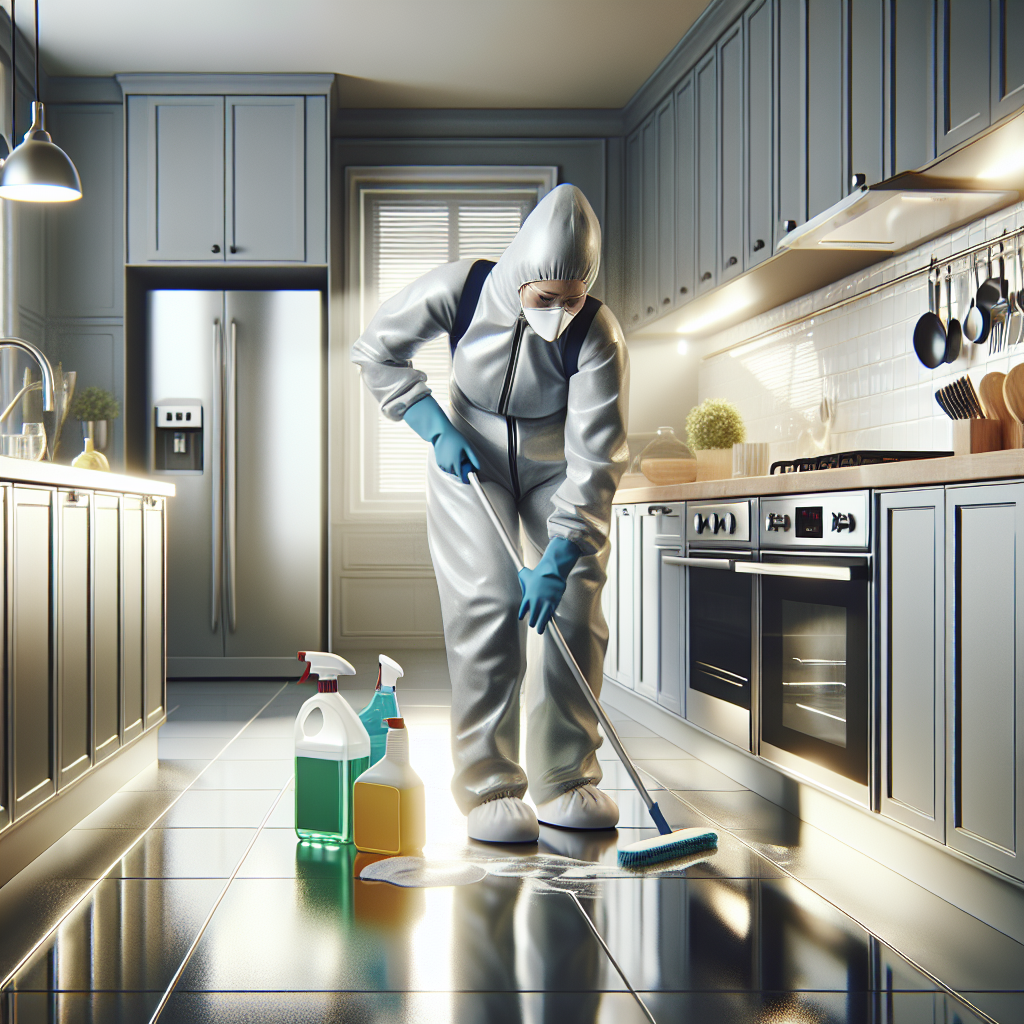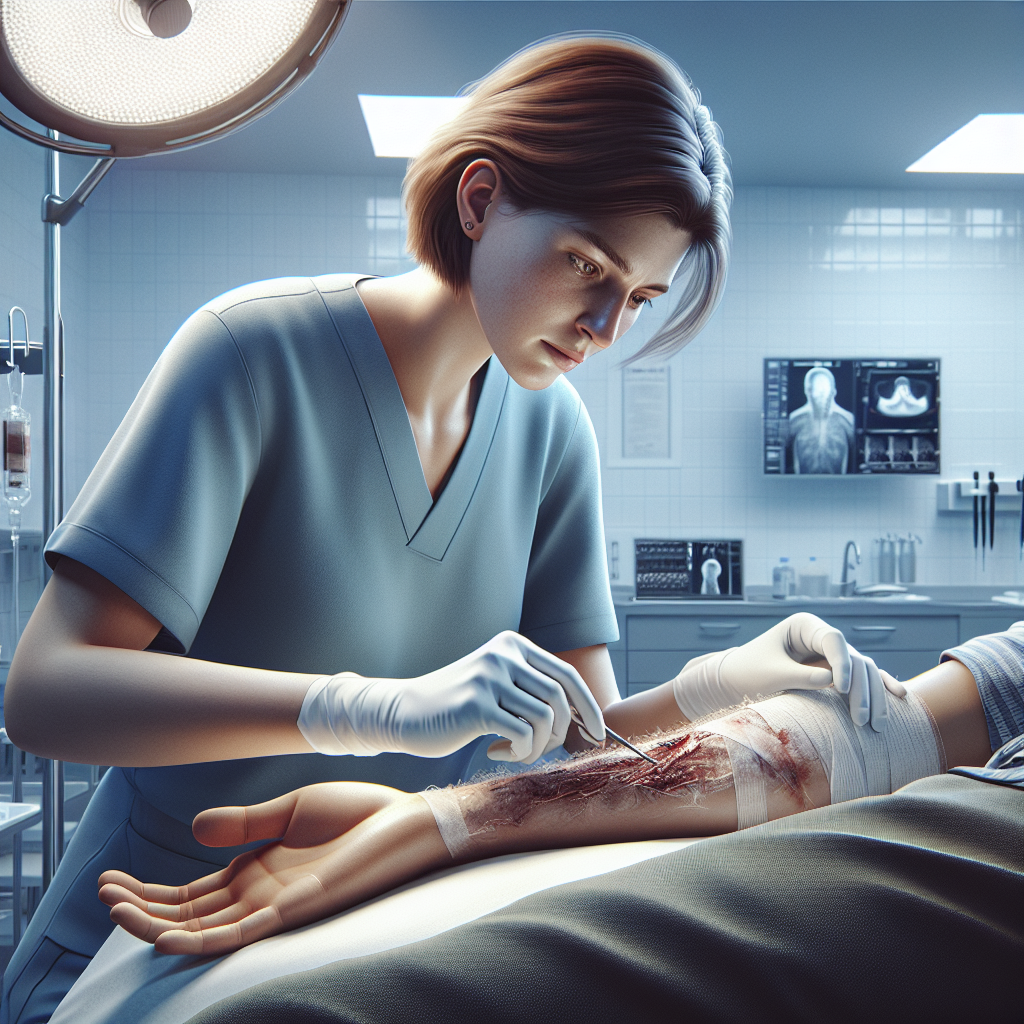Debridement vs Deep Cleaning
In the realm of cleaning and maintenance, understanding the concept of debridement is crucial. Traditionally, debridement refers to the medical process of removing dead, damaged, or infected tissue to promote healing. However, in a broader context, it can also be applied to cleaning practices in both residential and commercial environments.
When we discuss debridement vs deep cleaning, it is essential to recognize that debridement focuses on more than just surface cleanliness. It involves:
- Thorough Removal: Eliminating all unwanted materials, be it dirt, grime, or organic matter.
- Health Benefits: Promoting a healthier space by reducing allergens and bacteria.
- Preparation for Further Cleaning: Laying the groundwork for more intensive cleaning procedures.
Debridement is particularly relevant in spaces that require a higher level of hygiene, such as kitchens, bathrooms, and healthcare facilities. By adopting a debridement approach, cleaning services can ensure that they not only address visible dirt but also enhance the overall sanitation of the area.
Understanding this process allows you to make informed choices about your cleaning needs. If you’re considering professional cleaning services that prioritize health and thoroughness, visit our website to learn more and get your FREE Quote today! Click here.
The Concept of Deep Cleaning Explained

Deep cleaning is a comprehensive cleaning method that goes beyond the routine tidying up of spaces. It is designed to eliminate hidden dirt, dust, and grime that can accumulate over time in various areas of a home or office. While regular cleaning may focus on visible surfaces, deep cleaning delves into the nooks and crannies that often get overlooked.
- Detail-Oriented Approach: Every corner, baseboard, and fixture is meticulously cleaned, ensuring that no area is left untouched.
- Improved Indoor Air Quality: By removing dust and allergens from carpets, upholstery, and vents, deep cleaning contributes to better air quality.
- Long-Term Maintenance: Regular deep cleaning can prolong the lifespan of carpets, furniture, and other surfaces by preventing buildup of dirt and grime.
This process is particularly beneficial in high-traffic areas and places where hygiene is critical, such as kitchens and bathrooms. Many cleaning services offer specialized deep cleaning options that can be tailored to meet specific needs, ensuring that every aspect of your environment is thoroughly refreshed and revitalized.
Key Differences Between Debridement and Deep Cleaning

When exploring the concepts of debridement vs deep cleaning, it’s important to recognize the distinct purposes and techniques involved in each process. While both aim to achieve cleanliness, they are applied in different contexts and have unique methodologies.
Debridement is primarily a medical term used to describe the removal of dead, damaged, or infected tissue from a wound to promote healing. This process is crucial in medical settings, particularly in treating chronic wounds, burns, and other skin injuries. The key characteristics of debridement include:
- Medical Context: Debridement is performed by healthcare professionals and is often necessary for physical recovery.
- Focus on Healing: The main goal is to facilitate the healing process by removing harmful tissue.
- Techniques: Various methods such as surgical, enzymatic, or mechanical debridement may be employed, depending on the severity of the wound.
In contrast, deep cleaning pertains to the thorough cleaning of spaces, as discussed previously. It aims to improve hygiene and aesthetic appeal in homes or commercial environments. The characteristics of deep cleaning include:
- Residential and Commercial Application: It is applicable in both home and business settings.
- Preventive Maintenance: The focus is on removing dirt and allergens to maintain a healthy environment.
- Cleaning Techniques: Involves various cleaning agents and methods to tackle stubborn dirt and grime.
Understanding these differences is crucial for knowing when to utilize each method effectively, ensuring optimal results in both medical and cleaning situations.
When to Use Debridement or Deep Cleaning

Knowing when to use debridement or deep cleaning can significantly impact the effectiveness of treatment or cleaning efforts. Each process serves a specific purpose and is best suited for particular situations.
Debridement is indicated in medical scenarios, primarily when:
- Chronic Wounds: If a wound does not heal properly, debridement may be necessary to remove necrotic tissue and stimulate healing.
- Infection: In cases of infected wounds, debridement helps eliminate bacteria-laden tissue, reducing the risk of further complications.
- Burn Treatment: For severe burns, debridement is essential to prevent infection and promote skin regeneration.
On the other hand, deep cleaning is more applicable in everyday life and should be considered when:
- Seasonal Cleaning: Regular deep cleaning is ideal during seasonal changes, particularly in spring, to remove allergens and dust accumulated over time.
- Post-Event Cleaning: After gatherings or events, deep cleaning helps restore order and cleanliness to your space.
- Before Moving In or Out: It’s advisable to conduct a deep clean before moving into a new home or before vacating a property to ensure that the space is welcoming and hygienic.
By recognizing the right context for each process, you can ensure effective management of both health and cleanliness in your environment.
Benefits of Each Cleaning Method

Understanding the benefits of each cleaning method is essential for making informed decisions that enhance both health and hygiene. Both debridement and deep cleaning offer distinct advantages tailored to their specific applications.
Starting with debridement, the benefits include:
- Promotes Healing: By removing dead tissue, debridement facilitates faster and more effective healing of wounds.
- Reduces Infection Risk: Eliminating necrotic tissue minimizes the chances of infection, which is crucial in medical settings.
- Improves Patient Comfort: Debridement can alleviate pain and discomfort associated with chronic wounds, enhancing the overall well-being of the patient.
In the realm of deep cleaning, the advantages are equally important:
- Enhanced Indoor Air Quality: Regular deep cleaning removes dust, allergens, and pollutants, contributing to healthier air in your home or workplace.
- Longer Lifespan for Surfaces: Thorough cleaning can extend the life of carpets, upholstery, and hard surfaces by removing dirt and grime that cause wear and tear.
- Improved Aesthetic Appeal: A deep clean leaves spaces looking and feeling refreshed, creating a more inviting atmosphere for residents and visitors alike.
Both methods play a vital role in maintaining health and cleanliness, whether in a medical context or everyday living environments.
Conclusion: Choosing the Right Cleaning Approach

In the quest for a clean and healthy environment, understanding the differences between debridement and deep cleaning is crucial. Each method serves its unique purpose, addressing specific needs depending on the context.
When deciding which approach to adopt, consider the following:
- Context of Cleaning: Medical settings may call for debridement to promote healing and reduce infection risk, while residential or commercial spaces benefit significantly from deep cleaning to enhance air quality and overall appearance.
- Frequency of Cleaning: Evaluate how often you require deep cleaning versus occasional debridement. Regular maintenance through deep cleaning can prevent the buildup of dirt and allergens.
- Health Considerations: If you or someone in your space has allergies or respiratory conditions, prioritizing deep cleaning can significantly improve indoor air quality.
Ultimately, the choice between debridement and deep cleaning should align with your specific needs and circumstances. Whether you’re looking to heal a wound or refresh your living space, understanding these methods will empower you to make the best decision.
For tailored cleaning solutions that meet your needs, visit our website to learn more and get your FREE Quote today!